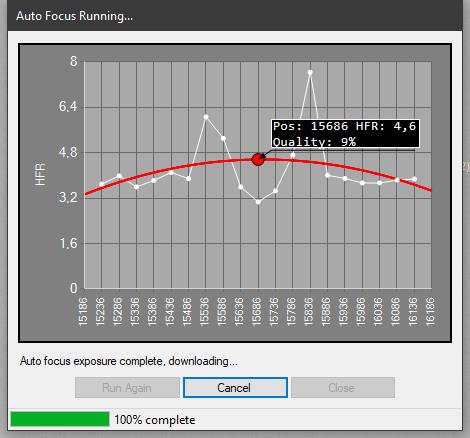Description
Here is an updated question with some more background:
When making a HFR profile over the focusing range, the profile will normally look like a ‘saddle diagram’. Best focus is in the middle of the saddle. HFR does not make much sense outside of the saddle when stars get diluted.
There are three focusing situations, simplified:
a) Good observing conditions which gives well defined saddle diagrams when focuser scans HFR throughout the relevant parts of the focusing area. Autofocus works very well, and covers well variety of situations which occur especially with non parfocal equipment. This gives variations of saddle diagrams. I am imaging in a city and will get HFR in good conditions down to 1.5-1.8.
b) Poor observing conditions but good enough so that HFR diagram still resembles a saddle diagram. Focusing under such conditions is unstable. In this case, notes of focuser position from good seeing conditions help. The saddle diagram is in this case the best indication of the best focuser position. I would get HFR down to 1.9-2.3.
c) Conditions are so poor that you can’t register the saddle. Not point of imaging.
It is easy to register saddle diagram with the new autofocuser algoritm. The autofocuser really works impressive.
I don’t have a permanent site nor parfocal filters, I also change camera often, so there are a lot focusing profiles.
Since I work mostly under case b), autofocus handles well many situations but gets often stuck or can not come to conclusion.
It would be nice if autofocuser would, in a fashion similar to calibration which done by PHD2, make a saddle diagram (HFR profile) of the equipment configuration.
This would have several benefits. It will help to determin when the fine focus adjustment meningfull. It will help to run in poorer conditions based on the settings from good conditions. It will also provide another means to determine how good seeing conditions are.
So the suggestion is to add ability to store HFR profiles to autofocuser. Profile can be registered by step size, for example 200. The fine focusing can then be done based on position of the saddle in the HFR profile.
/Janez

/Janez
Link to Logs
Useful Info
OS: Microsoft Windows 10 Pro
Ver: 3.1.0.429
.NET: 4.8